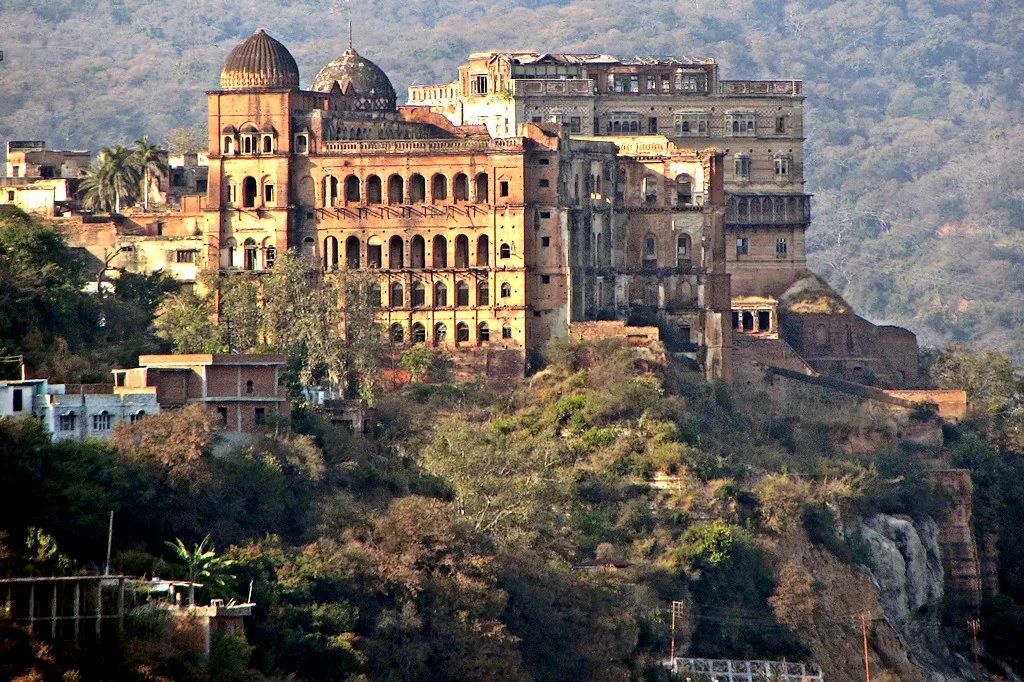A book on Maratha wars briefly introduced me to an event in the 18th century and mentioned the migration of some Marathas to Jammu during Ahmed Shah Abdali’s invasion. The story goes like this:
Ahmed Shah Abdali invaded India eight times between 1748 and 1767, following the collapse of the Mughal Empire. To maintain his huge army created by Nadir Shah for invasions, Ahmed Shah Abdali also plundered wealth from many temples in India including Vrindavan, Mathura, Varanasi, and Golden Temple.
Apart from Marathas, the Sikhs also gave the toughest fight and resistance to Afghans in many battles and plunder campaigns. The valour of Baba Deep Singh, Jassa Singh Ahluwalia, Hari Singh Nalwa and many more are well recorded. In 1757, Jat prince Jawahar Singh with 5000 men also offered tough resistance against Ahmad Shah Abdali’s forces near Mathura.
Balaji Bajirao alias Nanasaheb was the Peshwa of Maratha Empire when Abdali attacked India in 1761. Bajirao was a very capable leader who rather than depending on the old leadership of Marathas promoted young and aggressive military commanders like Holkar, Shinde, Dabhade, Gaikwad under his rule.
Bajiro was a heavenly-born cavalry leader and perhaps the best-ever cavalry general in the history of the Indian subcontinent followed by Rajput legend Bappa Rawal, his cavalry was as effective as that of Mongols. Every 2 riders would have 3 horses and would change their horse after the respective horse was exhausted. Marathas were a cavalry-heavy force under Bajirao.
In the battle fought by the Maratha army against the invader Ahmed Shah Abdali in 1761 at Panipat, the Marathas were defeated due to the superiority of the Afghan armory. However, the Marathas gave a tough fight, and 40,000 Marathas lost their lives. The Afghans lost about 30,000 soldiers.
Before the war, there was an explicit instruction from Maratha ruler to his forces to return with victory news only. Consequently, after the defeat of 1761, many Maratha soldiers moved to the hilly principalities of Punjab and Jammu and lived there for the remaining part of their lives. Many Brahmin soldiers became Sanyasin or priests for livelihood. One can trace many such people with Maratha ancestry in these places.
Probing further, I found some truth in the link between Marathas and Jammu. In Jammu and Himachal Pradesh, some people with surnames like Sathe, Ranade, Agnihotri, Padhye (Padha), Pant, and Pawar could be from this lineage. The background of Dogri short story writer Bhagwat Prasad Sathe confirms my belief.
Bhaskar Rao Sathe, the ancestor of Bhagwat Prasad Sathe, fought Abdali’s forces at Panipat as a member of the Maratha army. After the defeat of Maratha troops, he moved to Ramnagar (Jammu) and settled there. The Dogra Rajput Raja appointed him as priest and Kathavachak.

One day, during a religious congregation at Purmandal, Bhaskar Rao Sathe met his son who along with other members of his family was at Varanasi, where Sathe had left them before joining the war. It was in Varanasi that the son learned about his father’s presence in the hills of Jammu. A Sadhu had advised him to go to Purmandal and try his luck to trace his father as Sadhus from the length and breadth of the country would be present over there on a particular auspicious day. And there the son met his father.
A male member from this Sathe clan married a Brahmin girl from Bijbehara and the family was entrusted the priesthood duties of the Shiva temple built on the main highway by Dogra rulers in Bijbehara. Bhagwat Prasad Sathe, the doyen of Dogri prose is from this Sathe clan of Marathas.
Similar could be the story of some Upadhya or Pant or Ranade or Pawar families of Jammu. I happened to know one Ranade family in Basholi during the period I headed the Basholi branch of Punjab National Bank. I am also informed that the Baru Brahmins of Jammu are from Assam.
Bhagwat Prasad Sathe was born in December 1910 at Ramnagar, a small town in the lower Siwaliks, about 30 miles to the east of Jammu. Situated on a plateau 2700 ft above sea level, it has a salubrious climate and a beautiful setting among hills and streams.
Ramnagar had been the capital of Bandral Rajput rulers till the beginning of the 19th century. As typical of Kshatriyas, the Dogra Rajput rulers of Jammu welcomed all essentially, traders, priests, artists, artisans and people who could contribute towards prosperity and development.
The scholarship of Jammu Dogras was Hindu Sanatana Dharma-oriented. The Rajas of Jammu were deeply religious people believing in the doctrine of “Atithi Devo Bhavah” and they and their queens had numerous temples built, making Jammu a city of temples.

There is a Dogri folk song that gives a hint about the desire of every young man to serve the Dogra Rajput Rajas of Jammu for their “benevolent conduct”. It describes a conversation between a man and his wife and goes like this:
“Kuthaan di karni adiya chakri
Kuthaan di hai muhim
Jammu dhi karni adiye chakri.. “
(Where do you want to serve, my love
where do you plan to go?
I want to serve Jammu Kingdom, my love)
*Avtar Mota is an author, writer and poet. He is a blogger at Chinar Shade
Courtesy: The Kashmir Times

